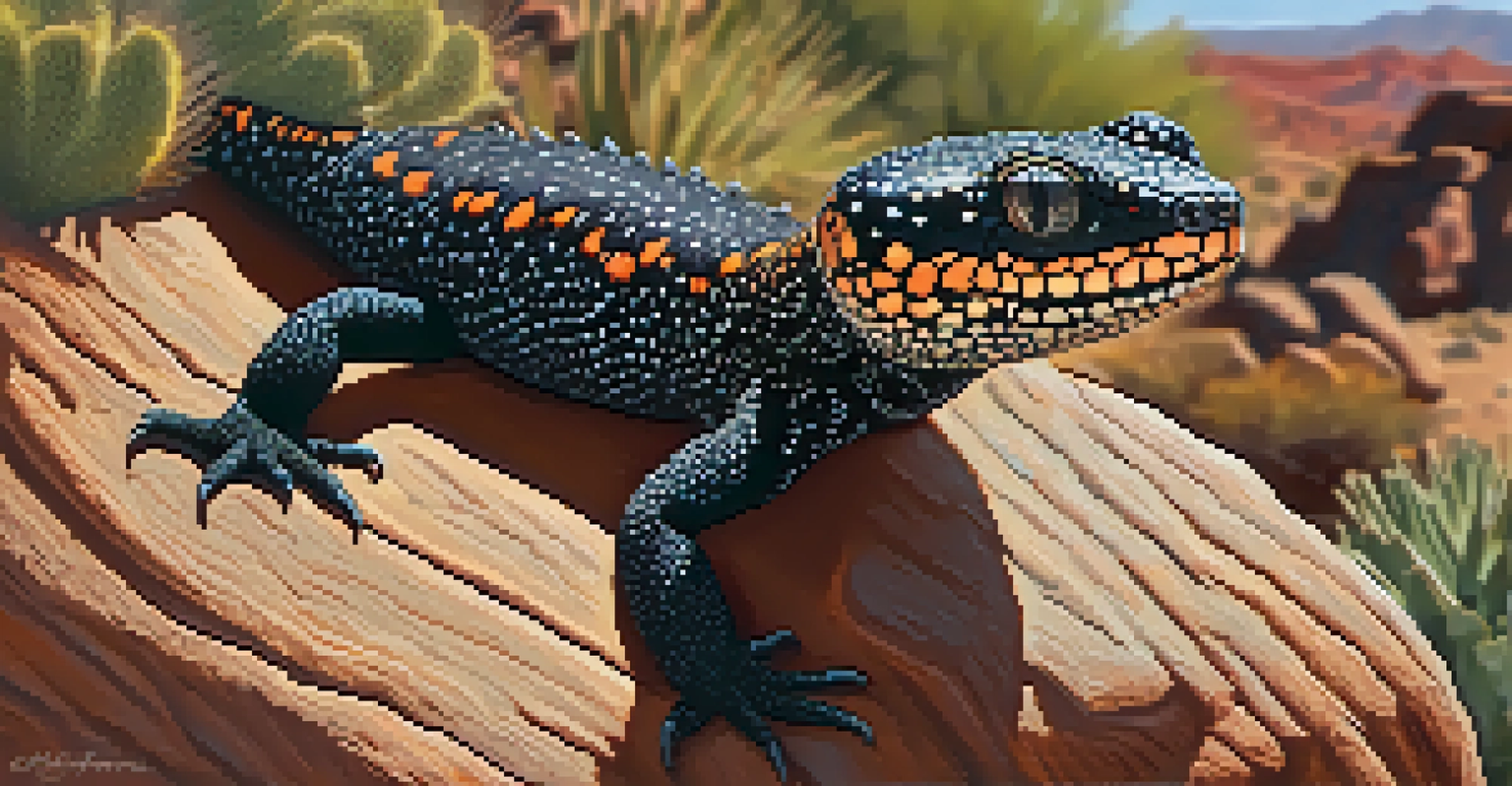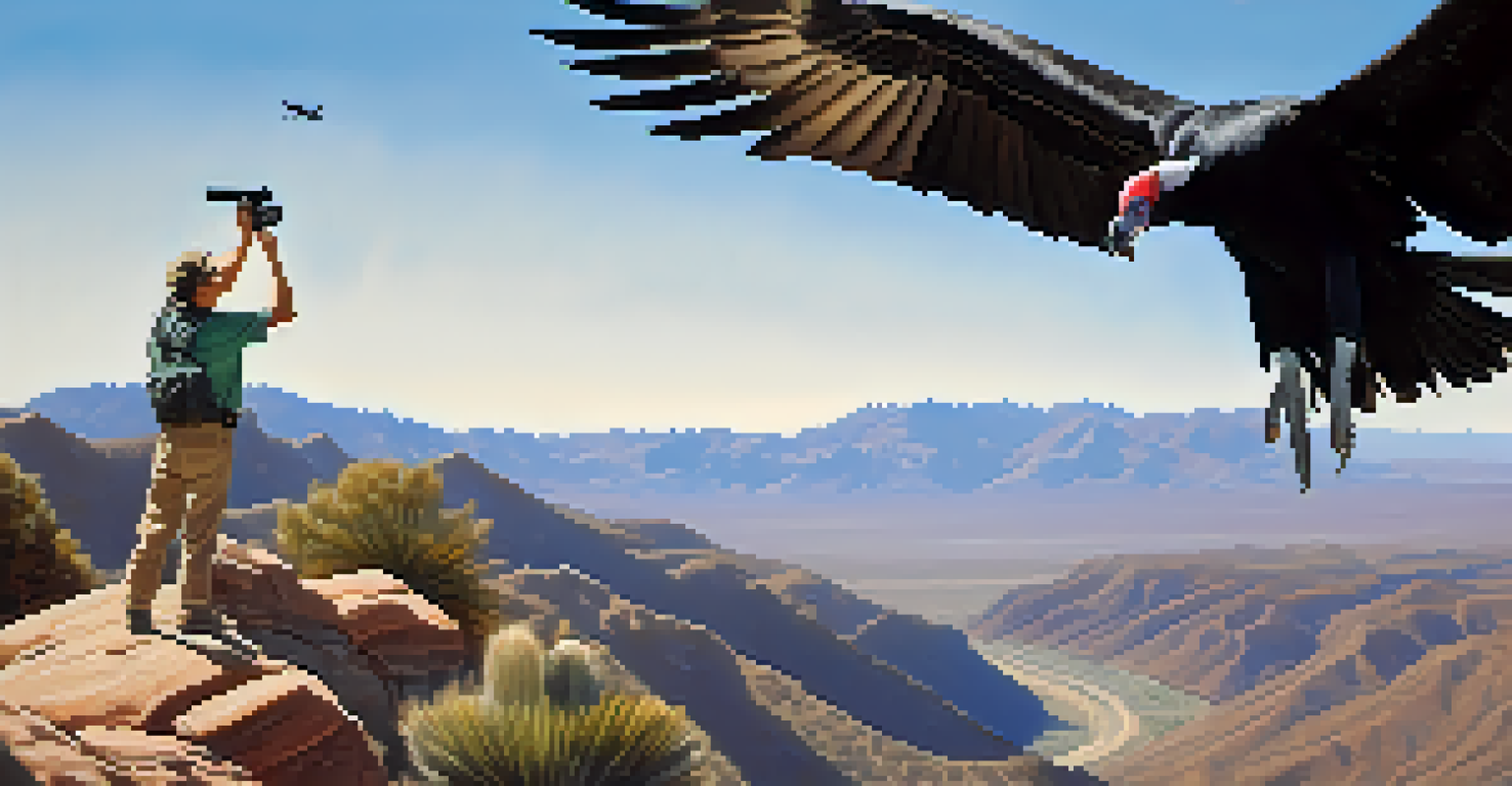Exploring Tucson's Unique Wildlife in the Sonoran Desert

An Introduction to the Sonoran Desert Ecosystem
The Sonoran Desert, stretching across Arizona and Mexico, is a vibrant ecosystem teeming with life. Known for its stunning landscapes and diverse wildlife, Tucson serves as a gateway to this unique environment. From towering saguaro cacti to vibrant wildflowers, the desert is a feast for the senses.
In every walk with nature one receives far more than he seeks.
What makes the Sonoran Desert particularly special is its variety of habitats, including mountains, valleys, and riparian areas. Each habitat supports a unique array of plants and animals, making it a hotspot for biodiversity. In fact, the region is home to nearly 2,000 species of plants and over 500 species of animals!
Related Resource
As we delve deeper into Tucson's wildlife, you'll discover how these creatures have adapted to thrive in the extreme conditions of the desert. So, grab your hat and water bottle as we embark on a journey through this fascinating ecosystem!
Iconic Fauna: The Saguaro Cactus and Its Residents
The saguaro cactus is perhaps the most iconic symbol of the American Southwest, standing tall and proud in the Tucson landscape. These giant cacti can live for over 150 years and grow up to 40 feet tall, providing essential habitat for various desert creatures. Birds like the Gila woodpecker and the cactus wren rely on saguaros for nesting sites, while other animals seek shelter in their shade.

During the spring, saguaros bloom with beautiful white flowers, which attract pollinators such as bees and bats. This symbiotic relationship is vital, as it helps to ensure the continuation of both the cactus and its pollinators. It's a perfect example of how wildlife and plants depend on one another in this delicate ecosystem.
Biodiversity in the Sonoran Desert
The Sonoran Desert is a biodiversity hotspot, home to nearly 2,000 plant species and over 500 animal species.
So next time you see a saguaro, take a moment to appreciate not just its beauty, but also the life it supports. This towering giant is more than just a plant; it's a bustling community of wildlife thriving in the heart of the desert.
The Secret Lives of Desert Mammals
Tucson's Sonoran Desert is home to a variety of fascinating mammals, each with its own unique adaptations. For instance, the desert cottontail rabbit has evolved to be a master of camouflage, blending seamlessly into its surroundings to evade predators. Meanwhile, the elusive bobcat prowls the night, relying on its keen senses to hunt for small mammals and birds.
The Earth has music for those who listen.
One of the most remarkable adaptations of desert mammals is their ability to conserve water. Many species, like the kangaroo rat, can survive without ever drinking water; they extract moisture from the seeds they consume. This remarkable adaptation allows them to thrive in an environment where water is scarce.
Related Resource
As you explore Tucson, keep an eye out for these incredible creatures. Whether it's a fleeting glimpse of a rabbit or the soft rustle of a bobcat, the desert is alive with wildlife waiting to be discovered.
Birdwatching: A Paradise for Avian Enthusiasts
If you're a bird lover, Tucson's Sonoran Desert is nothing short of a paradise. The region is home to over 400 species of birds, making it a prime destination for birdwatching enthusiasts. From colorful hummingbirds flitting around desert blooms to majestic hawks soaring high above, the variety is astounding.
One of the most sought-after species is the endangered California condor, which can sometimes be spotted in the area. Conservation efforts have played a crucial role in bringing these magnificent birds back from the brink of extinction. Birdwatching not only offers a chance to see these incredible creatures but also helps raise awareness about the importance of preserving their habitats.
Importance of Conservation Efforts
Conservation initiatives are crucial for protecting the unique wildlife and ecosystems of the Sonoran Desert.
So whether you're an experienced birdwatcher or just starting, Tucson provides ample opportunities to connect with nature. Bring your binoculars and keep your eyes peeled, as you never know what feathered friend might cross your path!
Reptiles: The Masters of Adaptation
Reptiles are some of the most fascinating residents of the Sonoran Desert, showcasing incredible adaptations to survive in extreme conditions. From rattlesnakes to colorful lizards, these creatures have evolved to thrive in the heat. For example, the Gila monster, one of the few venomous lizards in the world, uses its bright colors as a warning to potential predators.
Many desert reptiles are cold-blooded, meaning they rely on external temperatures to regulate their body heat. During the scorching day, you might find them basking on rocks or hiding in burrows to escape the sun. As temperatures drop in the evening, they become more active, hunting for insects and small mammals.
Related Resource
Exploring the desert at dusk can reveal a whole new world of reptilian activity. So, if you’re lucky enough to spot a snake slithering across the sand or a lizard darting away, take a moment to appreciate the incredible adaptations these animals have developed to survive in such a harsh environment.
The Importance of Conservation in the Desert
As we explore the unique wildlife of Tucson's Sonoran Desert, it's essential to recognize the importance of conservation efforts. Many species are threatened by habitat loss, climate change, and human activities. Organizations and local communities are working tirelessly to protect these precious ecosystems and their inhabitants.
Participating in conservation efforts, such as volunteering or supporting local wildlife organizations, can make a significant difference. For example, initiatives to restore native vegetation not only benefit wildlife but also help maintain the natural beauty of the desert. Every small action contributes to a larger impact.
Top Spots for Wildlife Viewing
Tucson offers excellent locations like the Arizona-Sonora Desert Museum and Saguaro National Park for experiencing local wildlife.
By fostering a sense of stewardship for our environment, we can ensure that future generations have the opportunity to experience the wonders of the Sonoran Desert. Together, we can protect the unique wildlife that calls this beautiful region home.
Experiencing Tucson's Wildlife: Best Locations to Visit
If you're eager to experience Tucson's wildlife firsthand, there are several fantastic locations to explore. The Arizona-Sonora Desert Museum is a must-visit, offering a unique blend of a zoo, botanical garden, and natural history museum. Here, you can learn about local wildlife while observing animals in their natural habitats.
Another great spot is Saguaro National Park, where you can hike among the towering saguaros and discover diverse ecosystems. Keep an eye out for wildlife along the trails, including deer, coyotes, and a variety of birds. Guided tours and ranger programs can enhance your experience, providing deeper insights into the desert's ecology.

For a more immersive experience, consider joining a local wildlife tour. These tours often take you off the beaten path and into areas where you can observe desert wildlife in their natural habitat. No matter how you choose to explore, Tucson's wildlife is sure to leave a lasting impression!